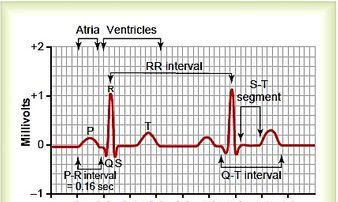NCCAOM: 12 PDA points ( AOM-Bio/OM Category) –
PDA-162984-7 08/31/2023
FLORIDA: 12 CEU (issued by FSOMA) (5 CEU Biomedical Sciences + 7 CEU General hours) – CE Broker Tracking #: 20-777272
TEXAS – 12 CEU (7 general, 5 biomedicine)
This class is intended for individuals familiar with the theory and clinical practice of East Asian medicine and illustrates a modern perspective on describing the TCM pulse through the interpretation of mobile ECG data.
Palpation of the pulse is one of the important diagnostic signs used by East Asian medicine practitioners to determine the state of Qi in the body. Reading a pulse traditionally relies upon developing refined palpation skills through extensive practice guided by a skilled teacher, which can be challenging to attain and master, and impossible to collect virtually. During this class you will learn how to obtain the pulse remotely in the telemedicine era.
Recent developments in mobile electrocardiogram (ECG) devices provide an excellent resource for practitioners to have a convenient and affordable tool for an objective pulse measure. Qi is an electric impulse that commands the heart chambers to contract that subsequently generates the pulse.
An ECG is an accepted scientific test to detect the electrical activity of the heart. It can also be used to measure and interpret the state of Qi in the human body. We can determine the strength of Qi by measuring the strength of the electric impulse that is clearly visible as the height of the R wave spike on an ECG. We can also determine TCM heat or cold conditions by the pulse rate, which is automatically registered on an ECG. The ECG can be read through a TCM perspective to determine a pulse diagnosis.
Learning Outcomes
- The student will learn basic ECG elements
- The student will be able to identify red flags requiring referral to MD
- Gain understanding of how select drugs may affect an ECG
- Master mobile ECG taking techniques
- Develop deep understanding of Qi qualities reflected in a pulse
- Have a working knowledge how to formulate TM pulse diagnosis based on a mobile ECG graph
For more info read an article:Translating Electrocardiogram Findings in Traditional Medicine Pulse Description. Acupuncture Today. November, 2019, Vol. 20, Issue 11












